Following their 1-0 victory at Carrow Road in October, Luton Town convincingly finished off their league double over Norwich City for the first time since 1981–1982. Surprisingly, Luton’s victory at Carrow Road was their last league victory. Since then, they have gone winless in all seven of their games, earning only two draws against Rotherham and Sunderland.
Rob Edwards’ first Championship managerial position after four months at Watford, was only on November 17 of this year when he was named manager of Luton. In contrast, Dean Smith has a distinguished Premier League history with Aston Villa which was then succeeded by Steven Gerrard. Smith has also had time to adjust to life with the Canaries compared to Edwards.
It was Smith’s 57th game as Norwich’s head coach. But given that Smith’s win record at Norwich was only at a measly 28%, it seemed that the Hatters were the favourites to win the match.
After failing to establish a rhythm in the team’s style of play, this tactical analysis will examine how Luton exploited Norwich’s issues with playmaking and the support system around the pitch. The tactics used by both managers will be examined in this analysis.
Lineups
Edwards made only one change from his starting lineup versus Middlesbrough to his usual team and favourite 3-1-4-2. He sometimes loves to convert to a 3-5-2 formation to bring additional width and a more attacking perspective. Luton’s first-choice goalkeeper, Ethan Horvath, began in goal.
Tom Lockyer served in the centre of the three-man centre-back line, with Daniel Potts and Gabriel Osho to his left and right, respectively. The only difference from the last game was that Osho took Amari’i Bell’s place when he was sent off against Michael Carrick’s side. 29-year-old Jordan Clark has so far won the coach over by deserving his regular playing time.
As the team’s fullbacks, Alfie Doughty and James Bree received the starting nod. The goalscorer Allan Campbell was teamed with the Congolese national Pelly Mpanzu to create the central midfield above Clark. Starting as the left and right forwards, respectively, were Elijah Adebayo and Carlton Morris.
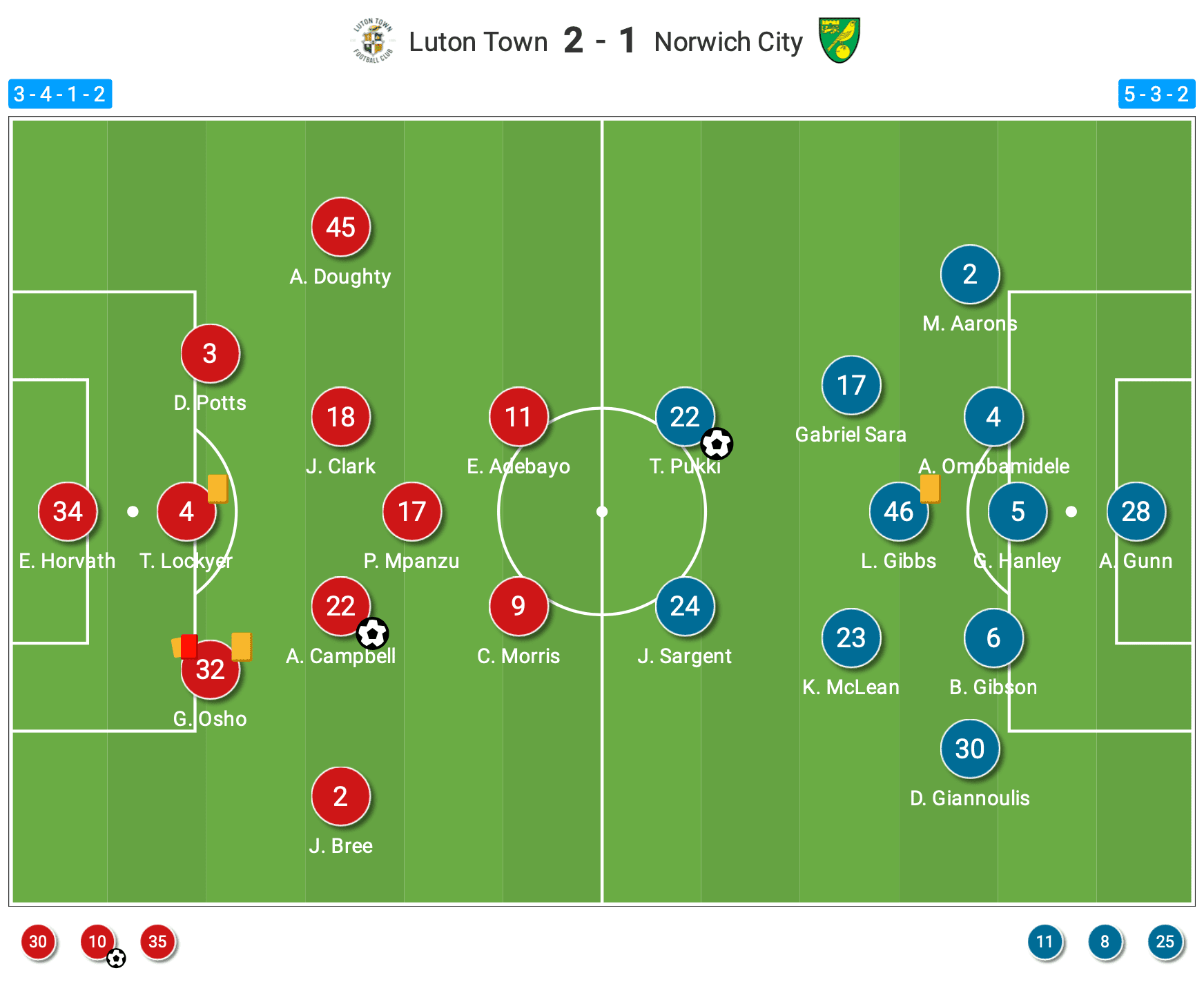
Since his Villa days, Smith has always favoured a four-at-the-back strategy. This season, Norwich has used a 4-2-3-1 a lot, and the manager’s second favoured formation is a 4-3-3. This was one of the rarest times he used a 5-3-2 formation to make the team more dynamic in the game.
The first-choice, who has started almost 23 of the season’s 24 games, Angus Gunn, was left unaltered. Ben Gibson and Andrew Omobamidele manned the left and right defences, respectively, while Grant Hanley took up residence in the centre of the defence.
The midfield was packed with Kenny McLean, Liam Gibbs and Gabriel Sara, the 23-year-old occupying the central area. Dimitris Giannoulis and Max Aarons were deployed as the full-back joining the midfield. Josh Sargent, who usually started wide in the previous games, paired up with Teemu Pukki to form the central attack.
Canaries’ inability to penetrate
Norwich’s switch from two to one pivot midfielder had a significant influence on their build-up play. The single pivot that supported forward movement was inadequate to span the space required to leverage Luton’s structure.
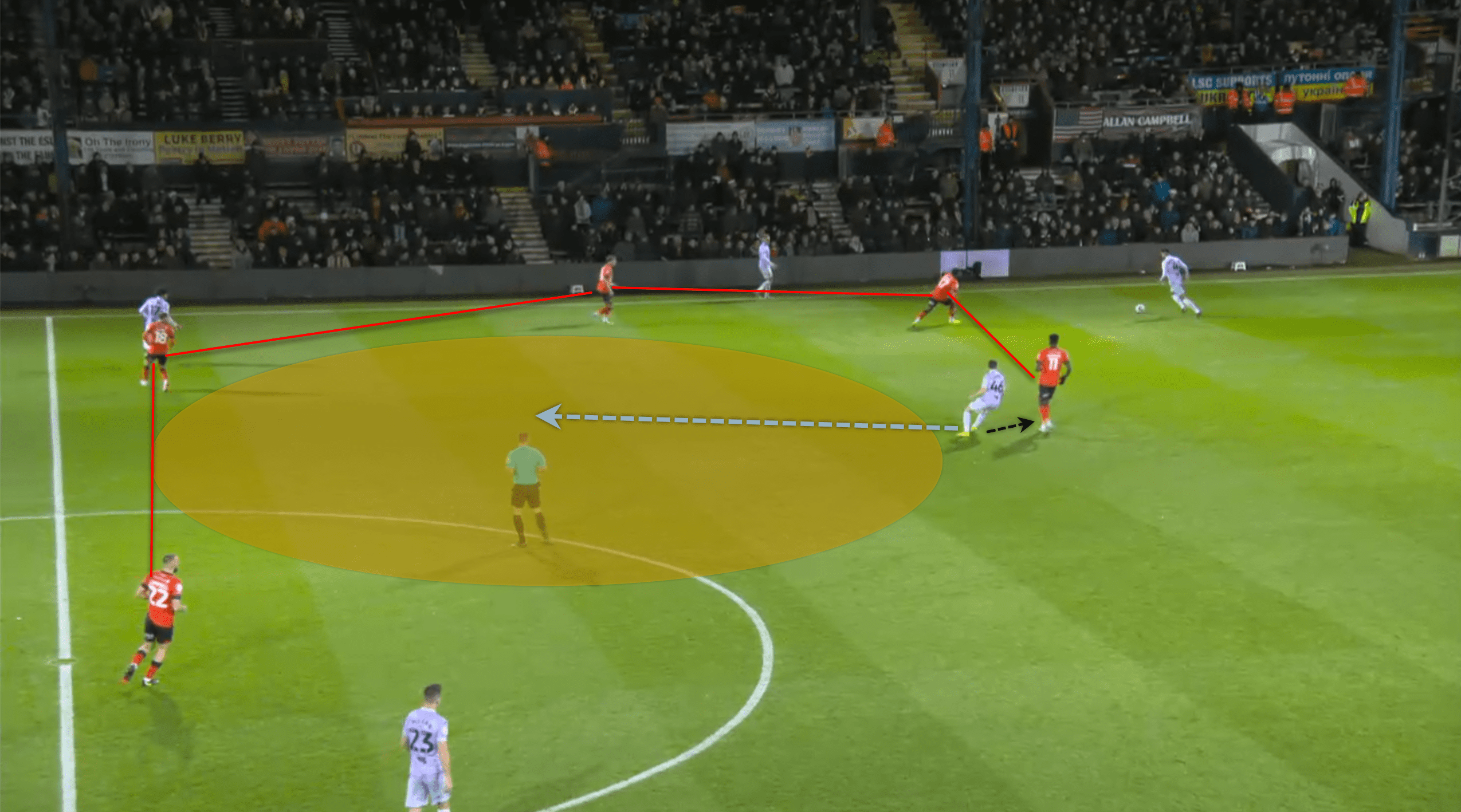
Smith trusted Gibbs, a 20-year-old, to play as the sole pivot underneath McLean and Sara. The adolescent was not strong enough to carry the middle midfield area on his own. His abilities were practically hampered playing in a different form after being used to having a teammate alongside him.
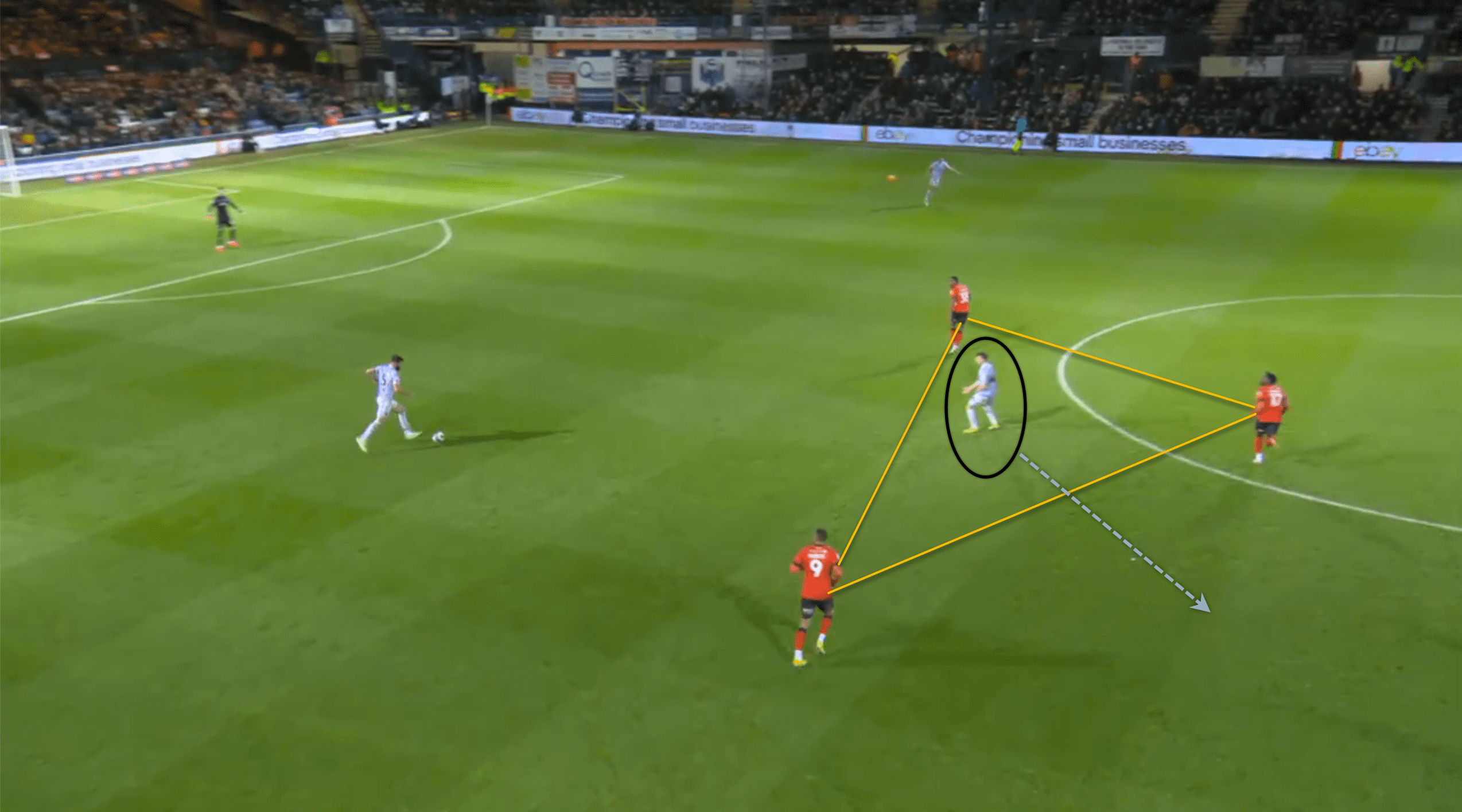
Gibbs was never in a good position to receive the ball, so his teammates cleared it, losing possession rather than passing it to the teenager. His is the most important position since he is responsible for back and forward support as well as width support. He’s in the centre of the triangle in the image above, with little room to manoeuvre.
Norwich was unable to get beyond Luton’s low block because they wanted to park the bus and counterattack. The Canaries were relegated to the opposite side, where they were not at ease. Norwich’s centre-backs were forced to cross after failing to penetrate.
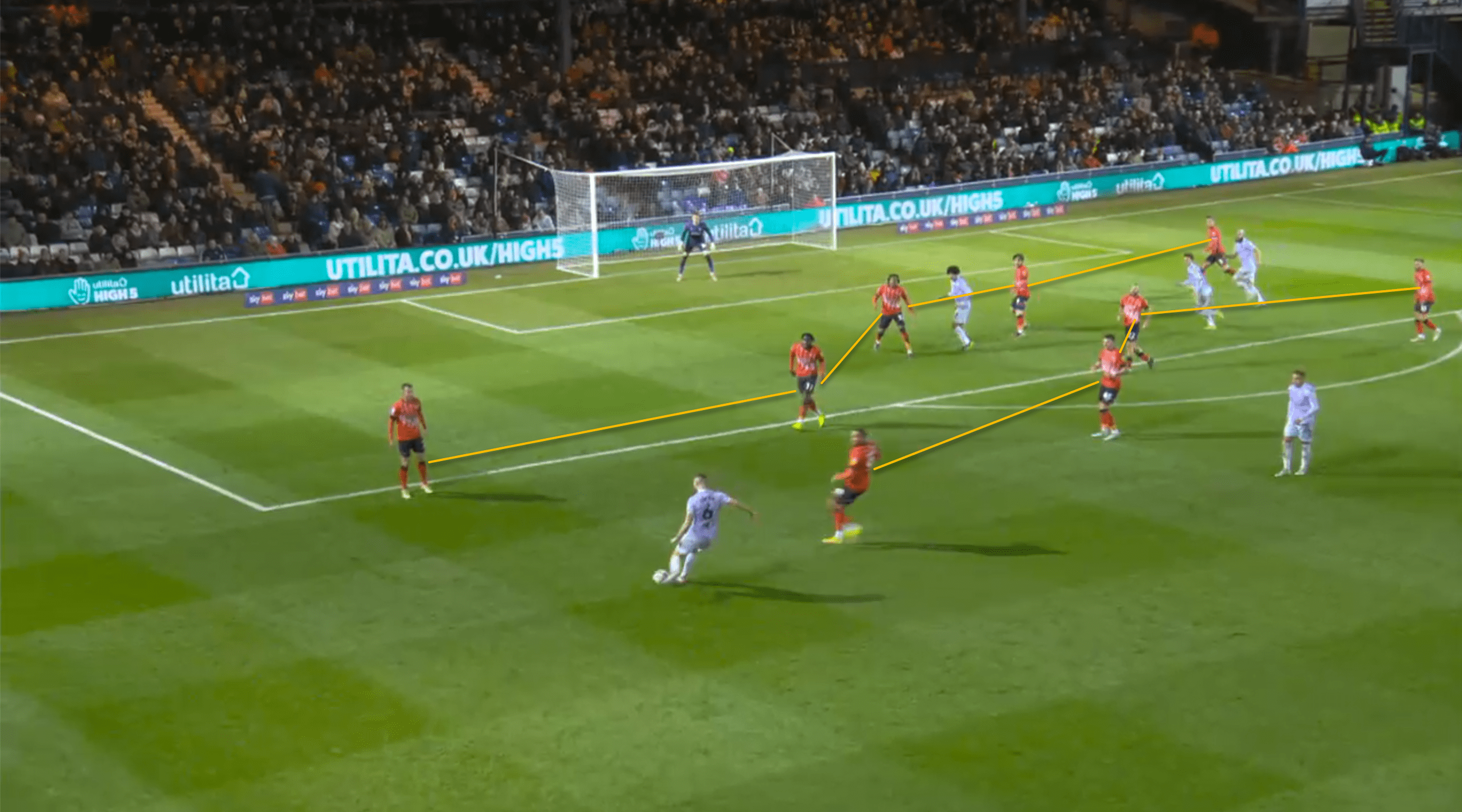
Norwich broke through the defence at times but was unable to sight the goalmouth too frequently. Even though the players were well-positioned at times to progress, misplaced passes have caused Smith and his squad the greatest anguish.
Norwich’s lack of movement in the latter third is seen in the below picture. The attackers were unable to assist his lone teammate who was in a 2v1 situation. Thus, following a hopeless Norwich effort, Luton won the ball in this position.
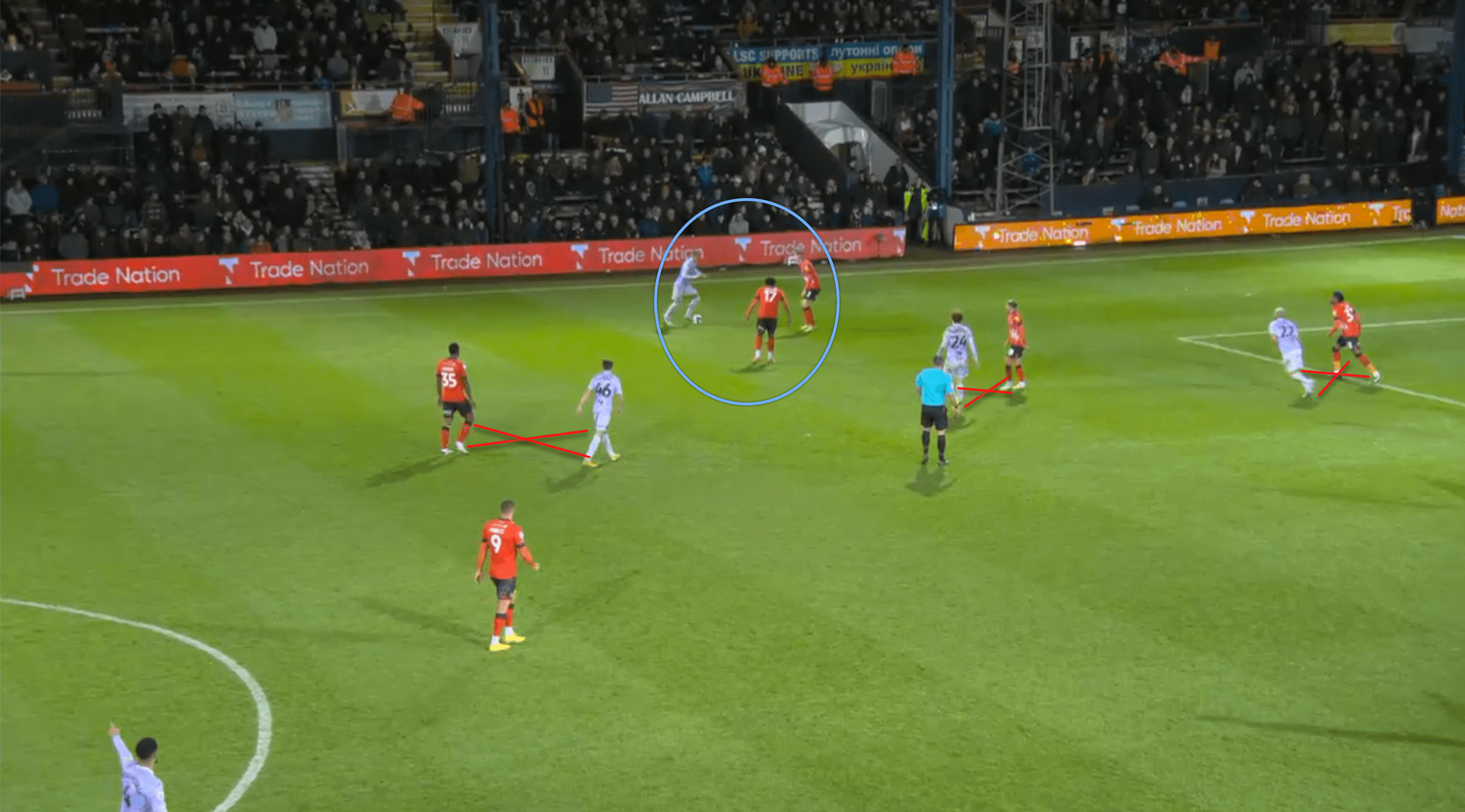
Sargent’s physicality was underutilised; he was seldom the one to set up or lay off after collecting the ball using his body. The graphic below depicts a scenario wherein he lays it off to the area where his teammate will end up and shoot.
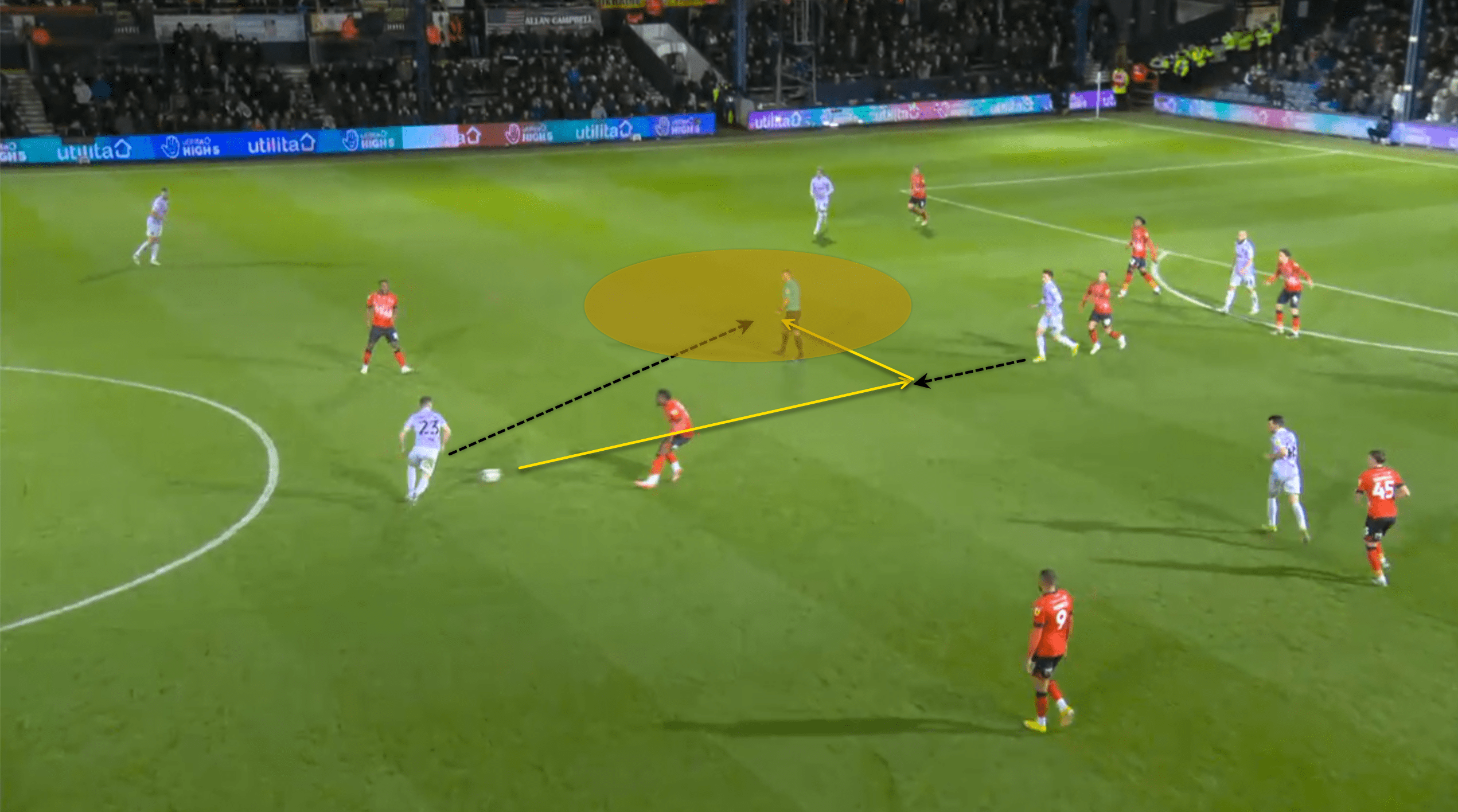
To summarise Norwich’s first-half performance, everything went wrong except rushing and racing for the ball and defending. They were stronger defensively in the second half, but offensively they were trapped in a loophole trying to produce, simply trying until the very end.
Norwich was fortunate to get the lone goal when Potts misread and ended up committing in the duel. Apart from the goal, the Canaries had no clear opportunities, resulting in a pitiful offensive performance.
Emerging supports from Luton
Edwards provided excellent instruction and direction to the midfielders, who appeared to solve problems simply by racing into the right spaces. Mpanzu went down periodically to support Clark when needed. The midfielders were on top of their game for Luton as they did what Edwards wanted them to.
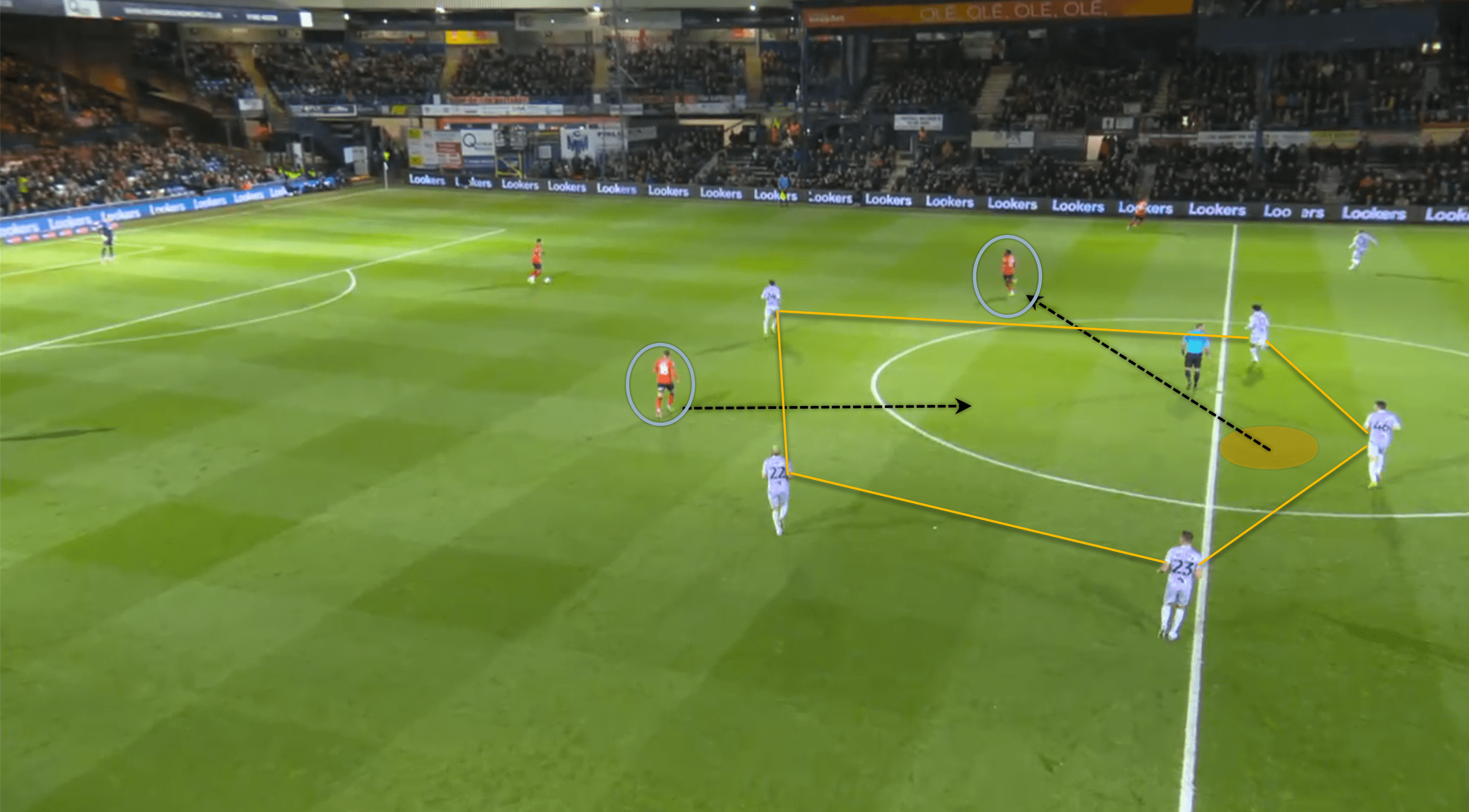
Mpanzu’s mobility enabled Clark to roam about and get out of the limelight. His active participation enabled Luton to grow without being pressed. He also utilised his athletic physique to retrieve and intercept passes whenever he could.
Down below is the graphic of Mpanzu’s heatmap during the whole match where he played for a total of 99 minutes. He was present everywhere at crucial times when the team needed him the most. Apart from his supporting duties as a midfielder, he has won 83% of the defensive duels he was involved in which was 5 successful out of a total of six.
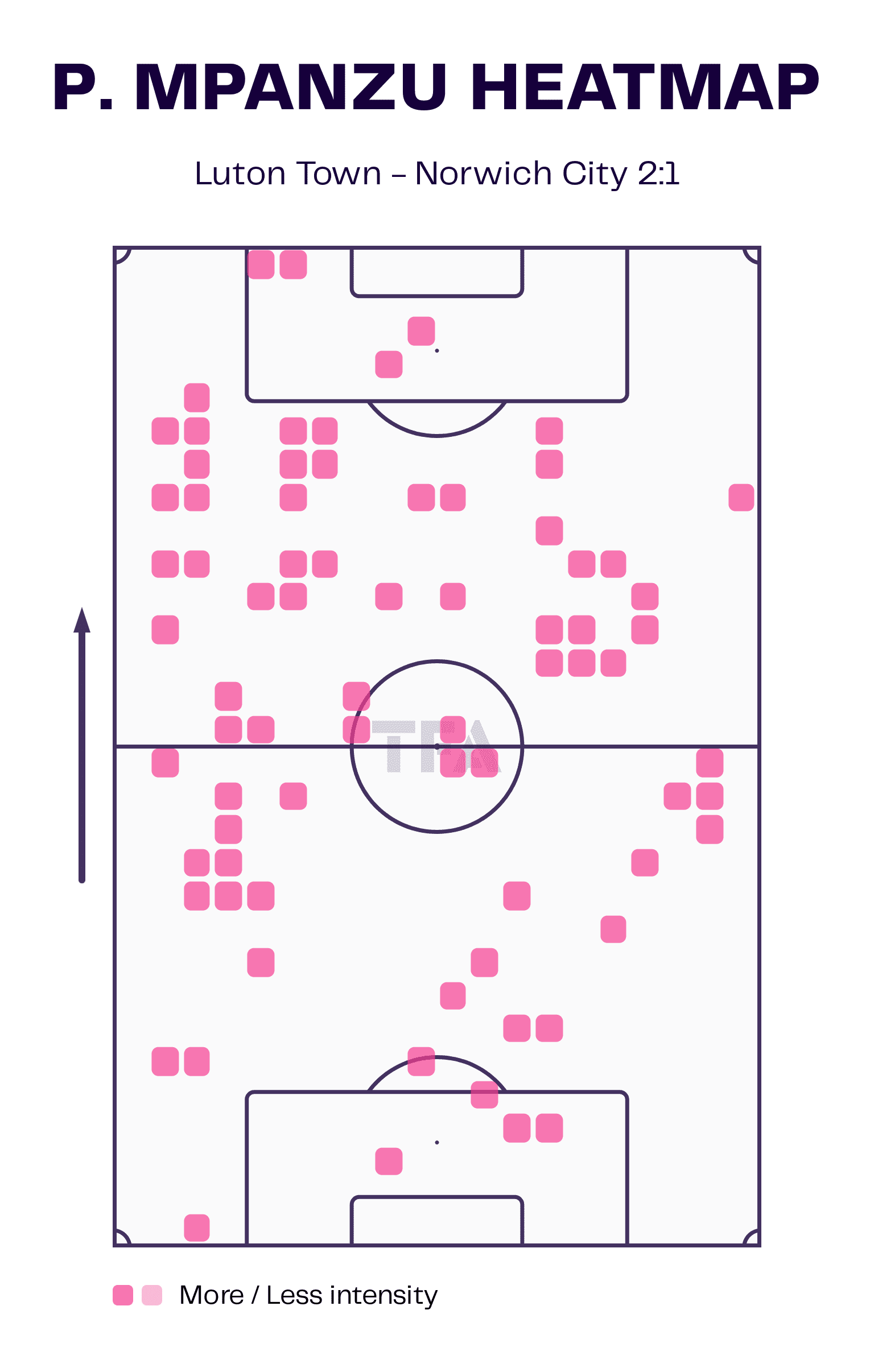
Mpanzu has had a promising start under the new coach as he seems to be the player who could run the game shortly. His awareness to quickly spot the areas to exploit would impress Edwards in involving more in his philosophy. Once Campbell tried to ride up the pitch, dragging an opponent, Mpanzu right away ran to the space without even thinking.
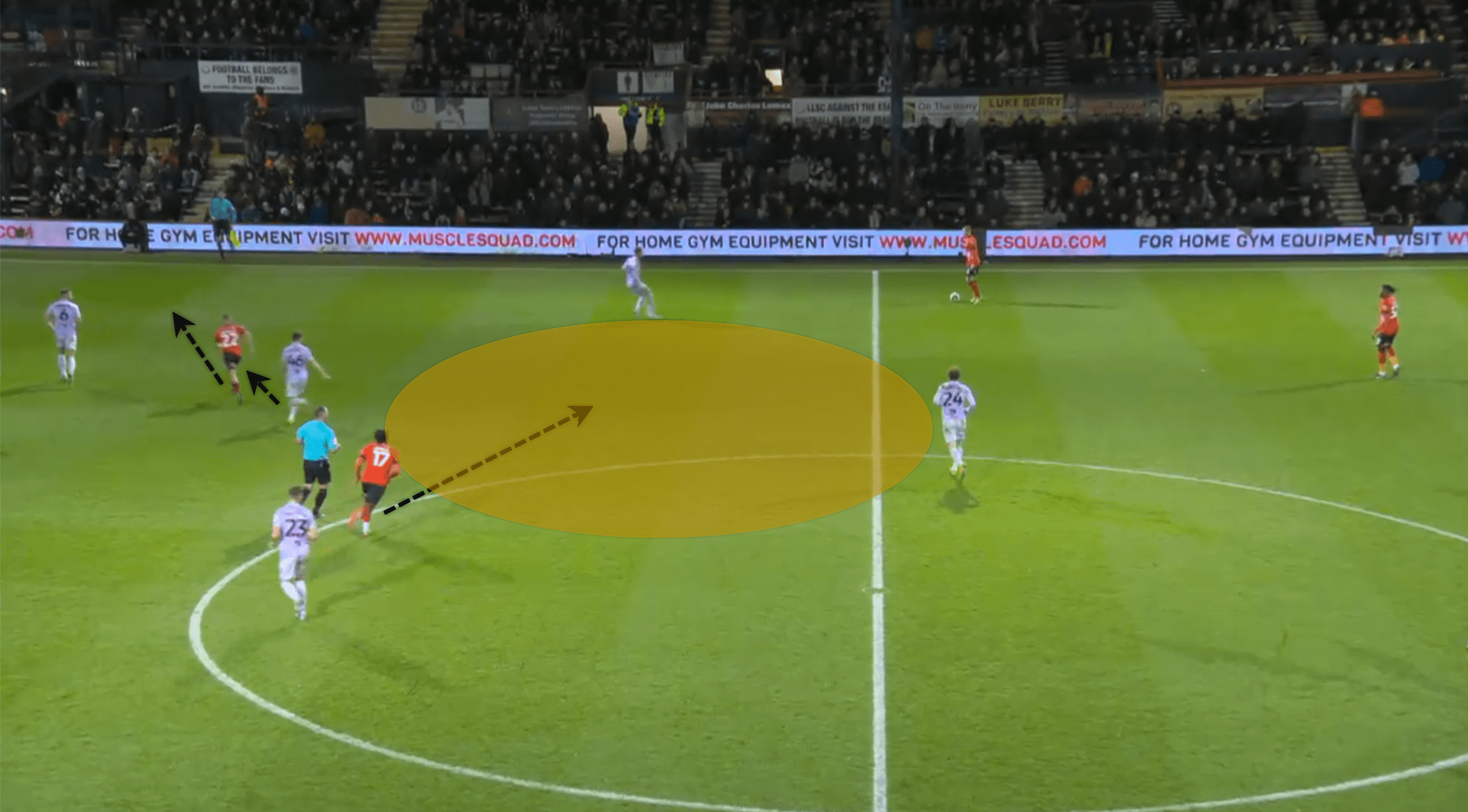
The defenders while off the ball, had a simple job to do. They were to position higher up the field to fool the attackers who thought were covered. Here, in the below picture is Potts who sneaks up behind Pukki, who thinks he cuts the passing line but is not even aware that Potts had moved way up to support Clark at the right moment.
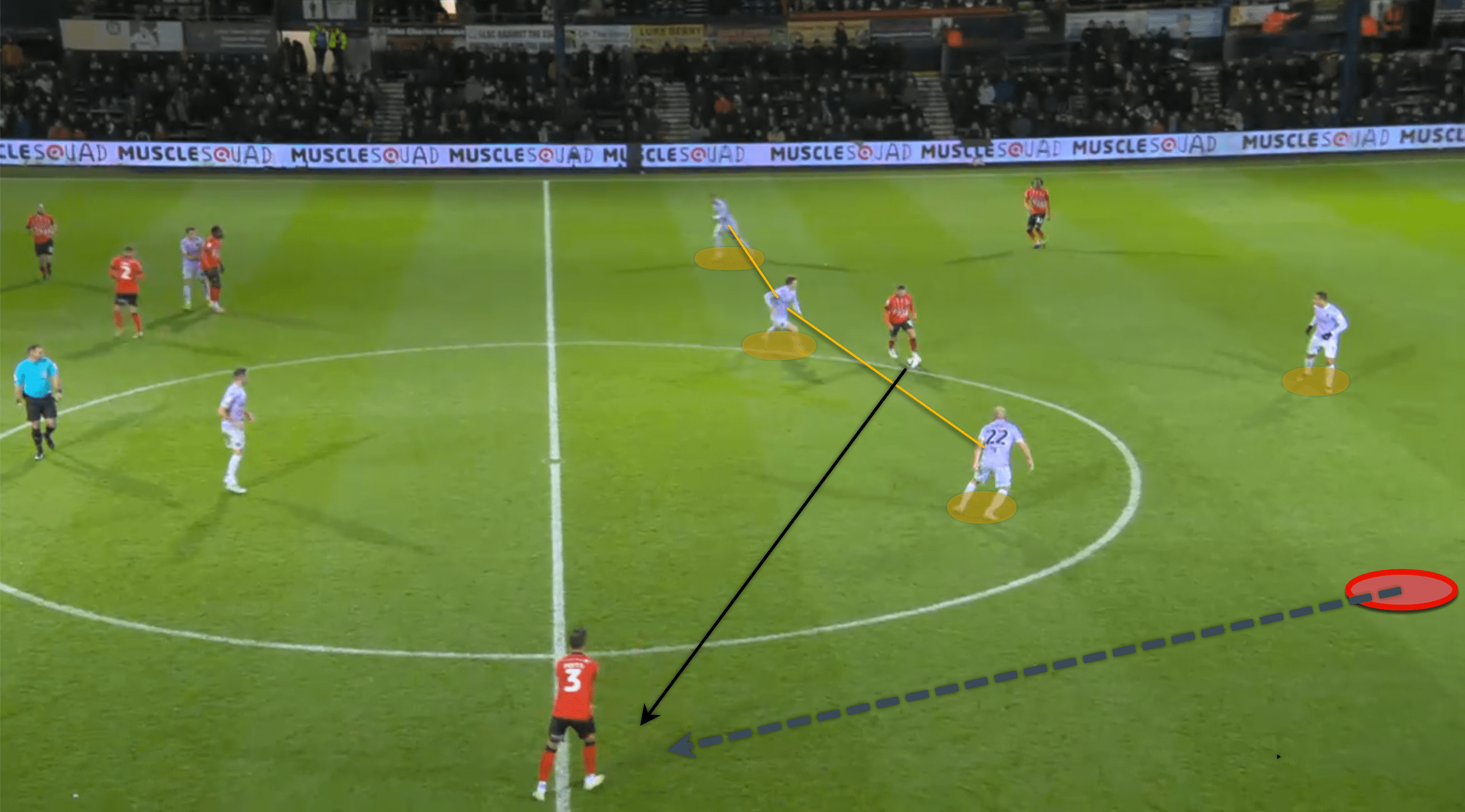
Luton was at ease with the ball in their half, with the majority of their players anticipating the opposition. Edwards’ plan worked like a charm. They passed the ball until the press was suppressed and used long balls to win duels in the opponent’s half.
McLean and Sara of Norwich, who were pressing recklessly, gave Luton a way out of tight circumstances. It was as though they were instructed to press whenever they felt restless. The premature pressures exerted were unnecessary, as Luton quickly exploited them.
The energy used in the ineffective press had a greater influence on the team’s overall energy to continue attacking. This supplied all of the options for Luton. In the above image, after an unsuccessful press by the attackers, Norwich’s midfielders have no involvement or cooperation with the team’s press.
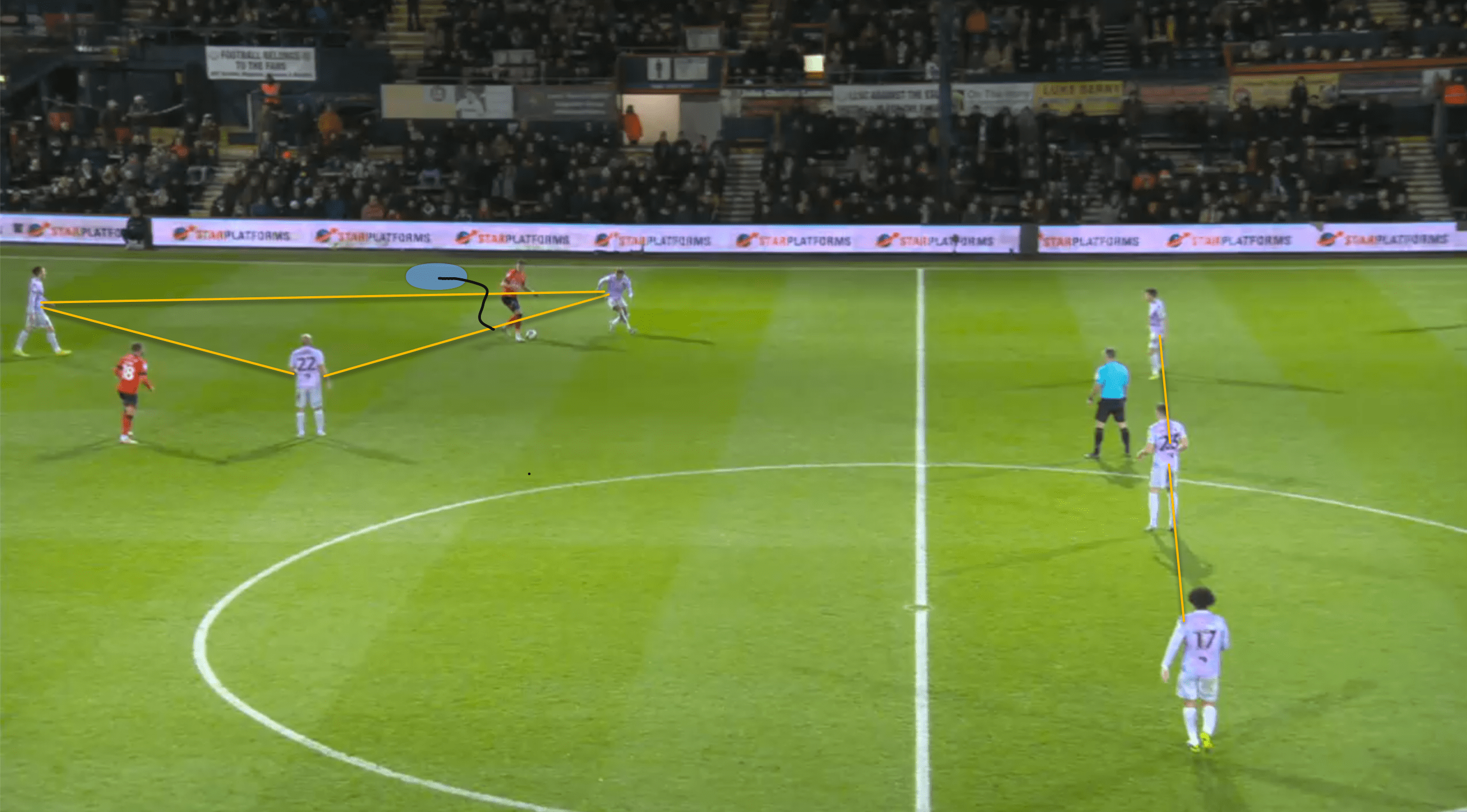
The left-back is just given the space to do anything after beating the first wave of the press. Only the first wave was present in Smith’s way of pressing. The second wave barely moved and waited for its opportunity until it never came. This should summarise the press by Norwich against Luton at Kenilworth Road.
Norwich, on the other hand, had awoken in the second half and began pressing aggressively. As Smith’s immediate shift was evident to the naked eye, the players needed to work together to perform effectively or else it was going to be the downfall of the team.
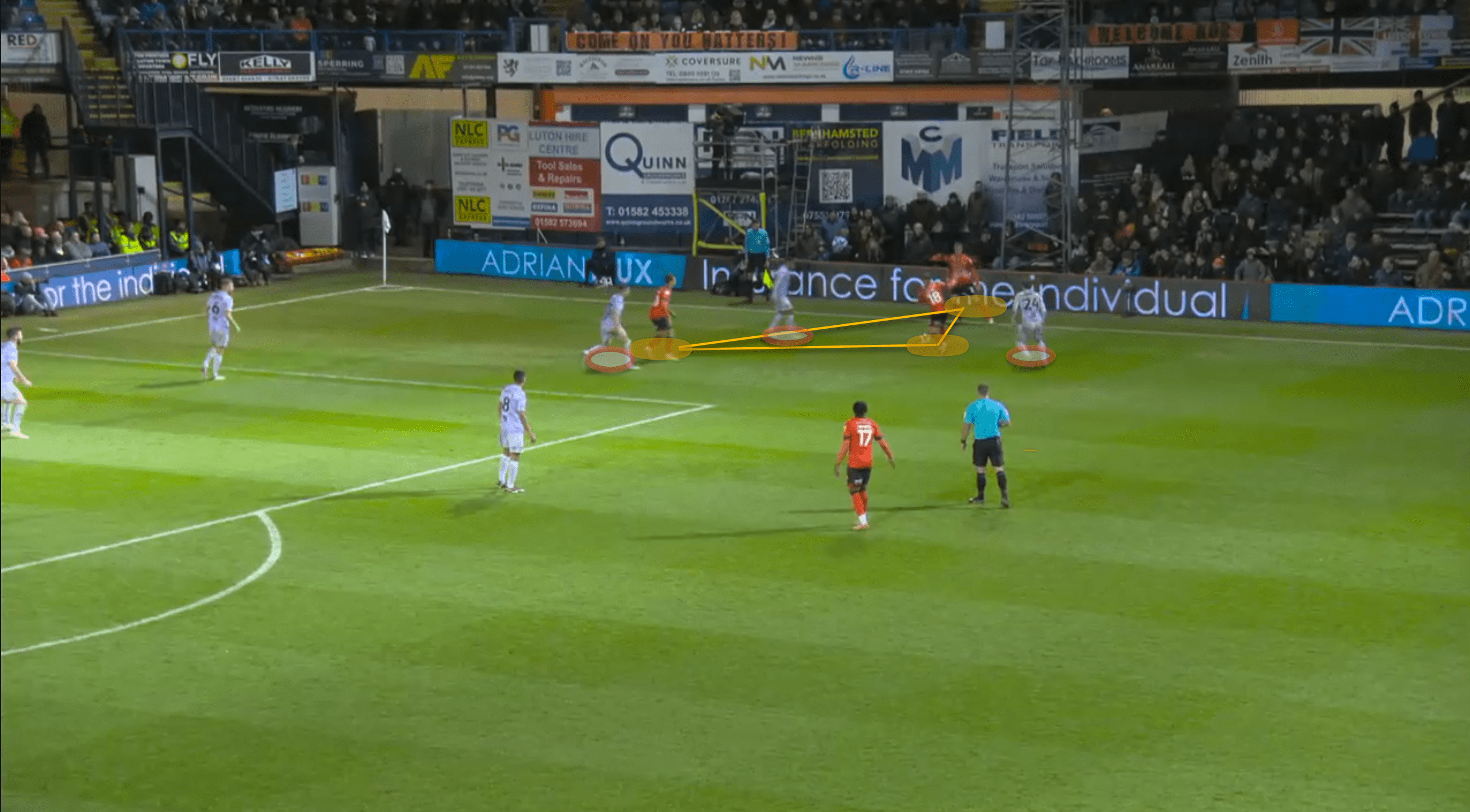
Following the red card, Luton was able to operate in tight areas and execute fast passes to escape the situation. This allowed their morale to remain high and produce as much as possible. The above and below pictures resemble how confident Luton was with the ball at their feet even though the space was minimal to an extent.
It was the substitute Cameron Jerome in the picture below, who replaced Adebayo after suffering a knock. Jerome was mainly brought on to utilise his massive physique to create combination plays. in the final third. Mpanzu would be the one to decide whether to come in or attack the depth depending on the one to receive the ball.
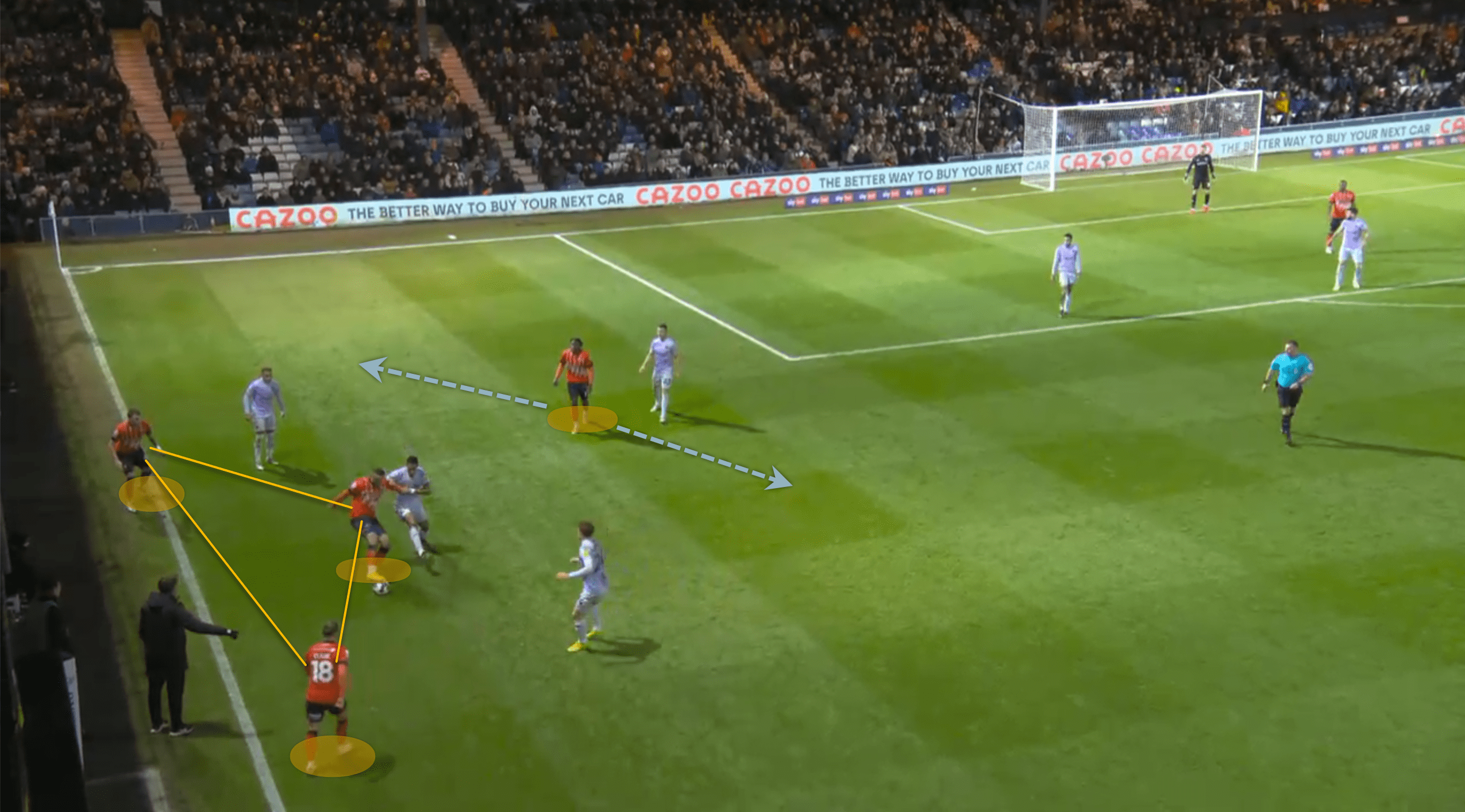
Campbell’s performance was flawless, as his work rate in generating goal-scoring possibilities equalled that of no other player on the field. He was the driving force behind Luton’s offence, carrying the team with his deft wall passes and interceptions in the opponent’s half.
His performances would skyrocket, securing him a transfer to the Bundesliga or maybe the Premier League. The correct coach will unlock his potential and allow him to shine.
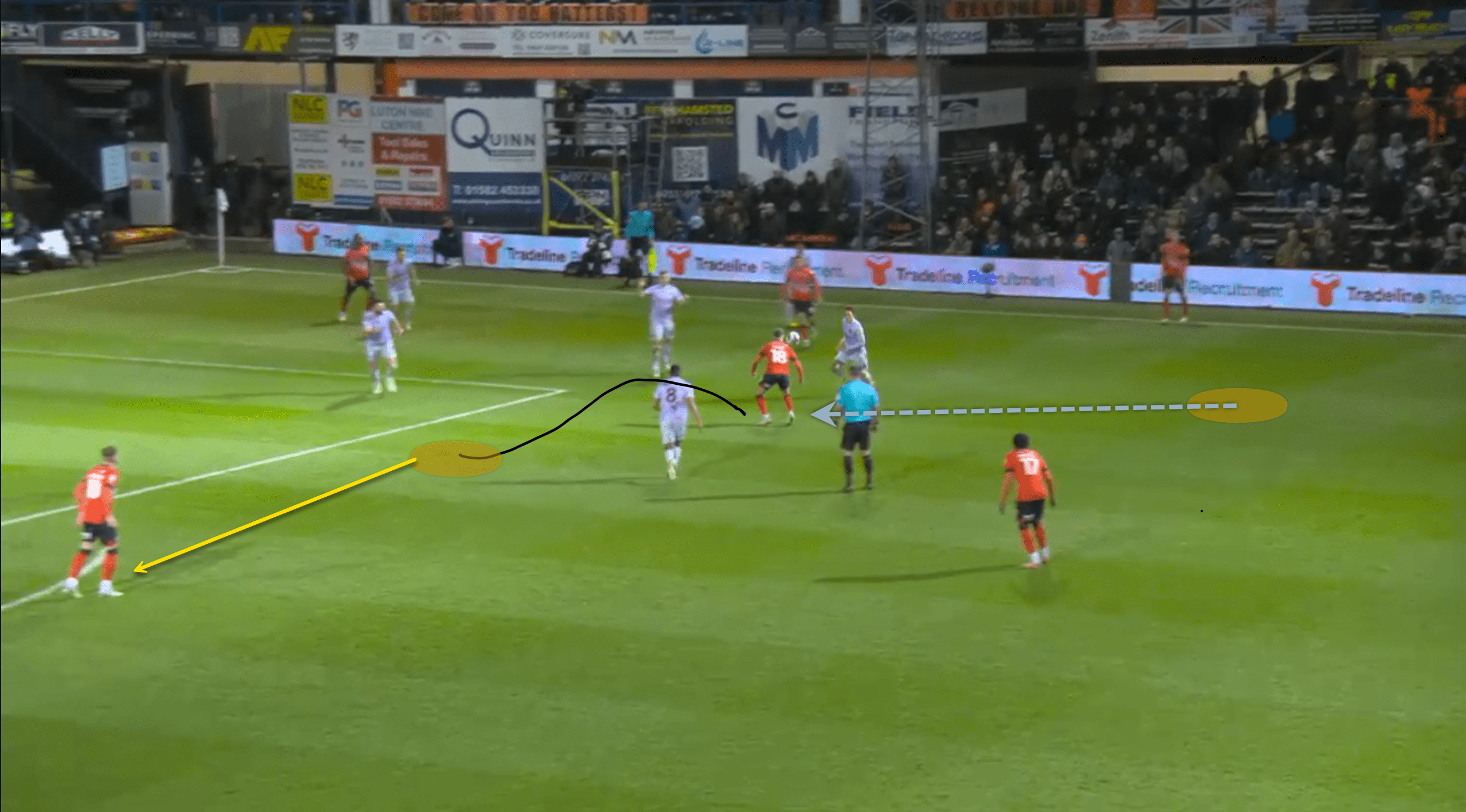
Campbell tended to move into the final third or the box whenever there was a counterattack to be an additional man for the team. His last third characteristic was his will to go ahead and make something out of nothing. Clark’s decision to advance into the half-space produced the goal-scoring chance, further helping Woodrow right outside the penalty area.
At times, when Luton’s manpower was loaded in Norwich’s half, their counter-pressing was also one of the elements to add to this game. This gave the home fans the energy to support a side which was placed in sixteenth place in the table, competing with the fifth-placed team.
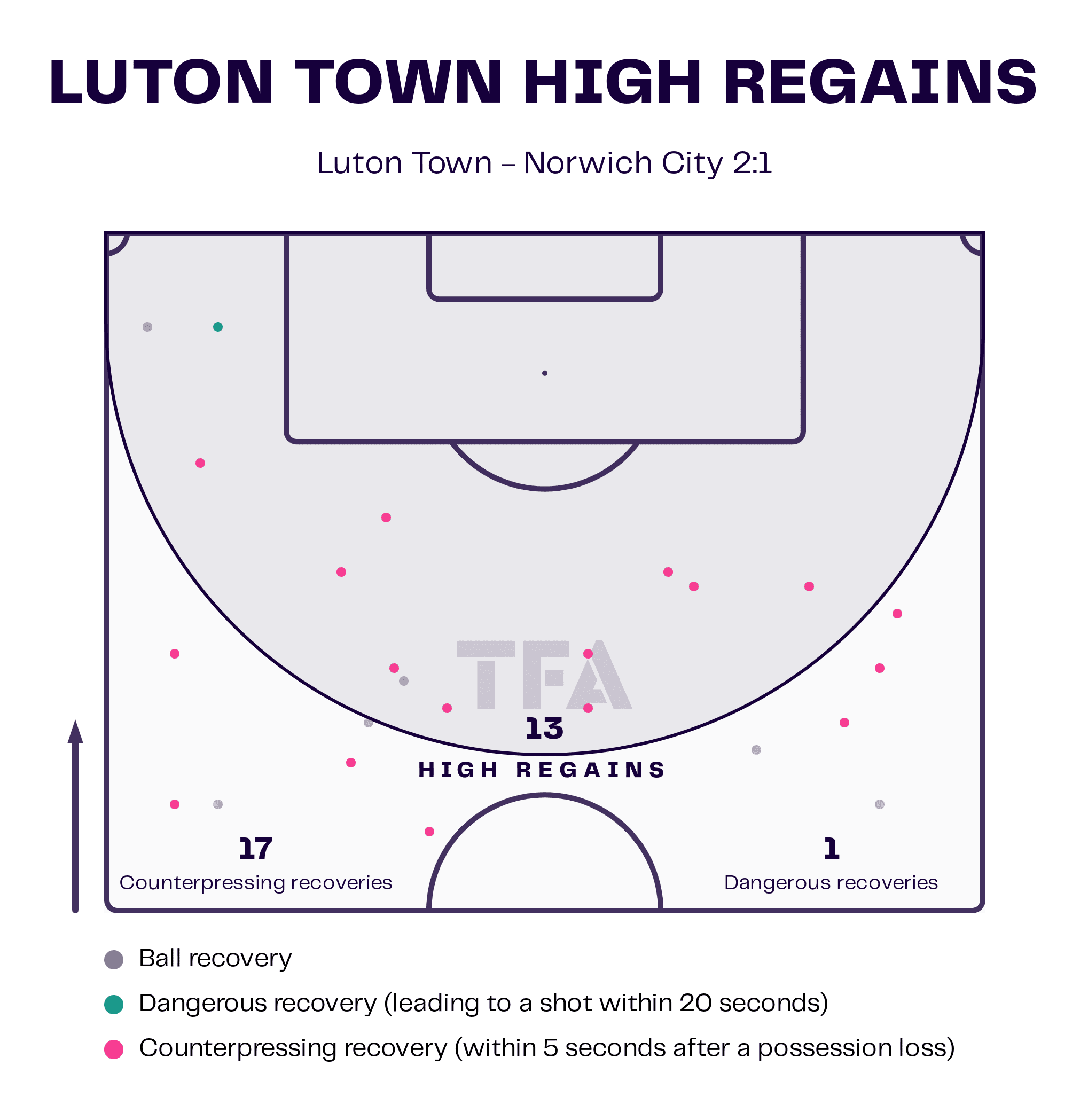
The accompanying image undoubtedly captures Edwards’ team’s counter-pressing actions. Luton used aggressive pressing to supplement all of their moves. The high regains total 13 and the counter-pressing recoveries total 17. Luton’s victory against the Canaries would not have been possible without the team’s tenacity.
Conclusion
With the Canaries having won their past two away games, interspersed with two consecutive home losses, it appeared like it was their chance to win, especially after Osho pulled back Pukki and was sent off. In Edwards’ first home game in charge of the Hatters, just 39 days after taking over, it seemed that he would have to settle for a point.
With 10 men in the last 10 minutes, Luton defeated Norwich thanks to a stunning 90th-minute winner from substitute Cauley Woodrow, mounting the pressure on manager Dean Smith. It was also Woodrow’s first goal for the club after joining from Barnsley in the summer.
Luton seemed to easily break through the lines and create chances whenever Norwich pressed with more intensity. Ultimately, Dean Smith and his tactical awareness of his style of play are in question. Luton deserved the win after displaying wonderful football filled with passion and energy.
After a difficult couple of months, Kenilworth Road was ecstatic to triumph again, giving its fans the perfect Christmas gift. Although Norwich led in every significant statistic, Luton managed to win the match 2-1 thanks to Norwich’s inability to press efficiently and their passion to win the first home game for the manager.





Comments